Explore the miracle of magnification with Luna 2.0 and Zoomy™ 2.0
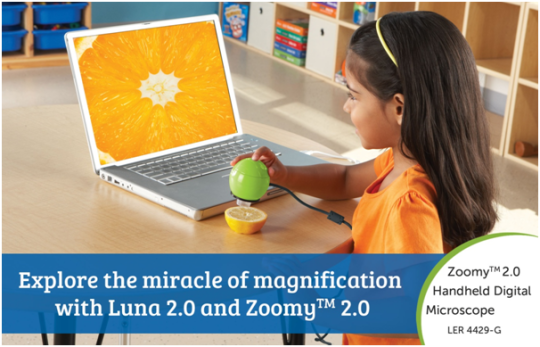
During primary school, all children should develop an understanding of the nature, processes and methods of science through different types of science enquiries that help them to answer scientific questions about the world around them. Microscopes encourage young learners to work scientifically and encourage curiosity and enthusiasm for discovery.
Zoomy™ 2.0 Handheld Digital Microscope
The Zoomy™ 2.0 is an all-in-one tool with up to 54x magnification, giving early scientific study a new perspective. This small, handheld microscope allows for hands-on learning and discovery.
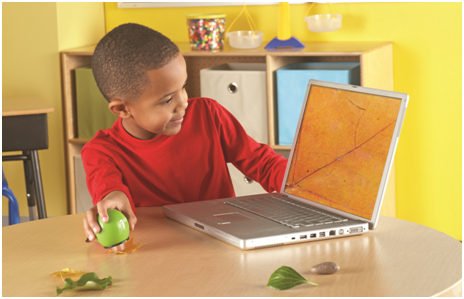
Easy for young learners to use, children can analyse familiar items close up to see the finer details. Everyday classroom objects can be viewed up to 54x larger, allowing users to zoom in on science discovery. The Zoomy 2.0 also comes with 2 head adapters for hands-free learning. Individual students can explore objects and surrounding with the head adapter while the rest of the class spectate using the interactive whiteboard for whole class discovery. Why not try a ‘Can you guess what it is?’ style game!
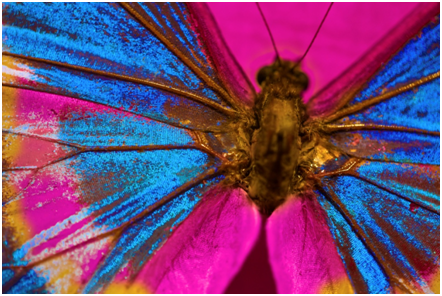
The National Curriculum in England: science programmes of study states:
“The principal focus of science teaching in key stage 1 is to enable pupils to experience and observe phenomena, looking more closely at the natural and humanly constructed world around them. They should be encouraged to be curious and ask questions about what they notice. They should be helped to develop their understanding of scientific ideas by using different types of scientific enquiry to answer their own questions, including observing changes over a period of time”
By using microscopes, children experience the world around them from a perspective not available to the naked eye. This type of scientific discovery encourages young learners to ask questions about what they can see as they observe their surroundings more closely than before. Prompt questions such as “what can you see that you couldn’t before?”.Using microscopes also reinforces areas of STEM Learning, and strengthens cross-contextual thinking as children learn the same skills, ideas, and concepts in different contexts.
What is STEM?
“STEMis an acronym for Science, Technology, Engineering and Maths, four areas of learning that are deeply intertwined and form part of every aspect of our lives. Exposure to STEM subjects helps children to develop critical thinking, reasoning and investigative skills, whilst encouraging innovation and creativity. By stimulating a child’s innate curiosity about the world and allowing them to explore and ask questions from an early age we can help develop a long lasting passion for science and discovery”
Emma Vanstone, Science Sparks
Why use microscopes?
- For many children, looking at books is not enough! They want to see, smell, feel and get hands-on with their own discoveries
- Using microscopes such as Zoomy 2.0 makes discovery and investigation a hands-on activity
- Microscopes help to develop hand-eye coordination and familiarise children with using a variety of screens such as whiteboards and laptops
- Children are not only learning about the objects they are looking at through microscopes, but also how to use the technology of the microscope itself
- Microscopes are fun! Microscopes can be toys as well as research tools, children will be having so much fun they won’t realise they’re learning
Luna 2.0 Interactive Projection Camera
Designed for busy teachers, Luna 2.0 is the perfect solution for multimedia projects across the curriculum; it can be used to zoom in on objects for whole-class demonstrations and is ideal for capturing videos and photographs.
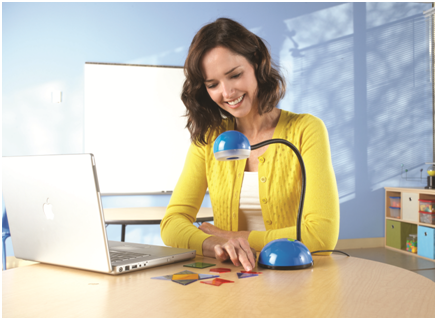
This classroom digital projection camera connects via USB port for use with your computer, laptop, projector or interactive whiteboard. Use Luna 2.0 for whole-class demonstrations of maths and science models, experiments in action, sharing book pages, and more.Making videos with the Luna 2.0 is easy, and the internal microphone allows for video narration by both adults and children while the LED lights help to lighten dark environments. The Luna 2.0 can also be used as a web cam on PC and Mac computers.This easy-to-use classroom must have allows you to transition quickly from projecting one object to another, and is highly portable, projecting from anywhere in the classroom. Its adjustable gooseneck can be manipulated to view objects from any angle, projected onto a variety of digital screens. No batteries are required, and there is no need for replacement bulbs, making the Luna 2.0 a reliable and cost effective classroom resource!
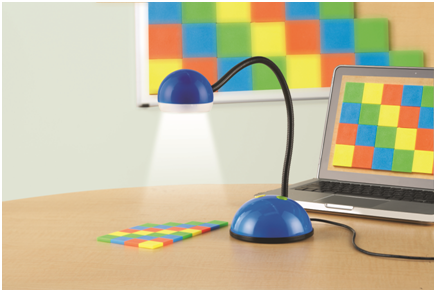
We’ve put together some ideas for activities that are great for getting young learners involved in microscopic discovery!
- Leave out some bread or other foods until they start growing mould. Take a look at it under the microscope and compare it to a fresh piece!
- Examine various plant parts such as the stem, leaves and roots. Can children identify each piece?
- Examine insects up close, can you see the texture of their body and legs?
- Compare materials such as socks, cardigans and shoes. What are the main differences?
Becky from Playful Learning developed this simple worksheet that is ideal for recording microscope discoveries!
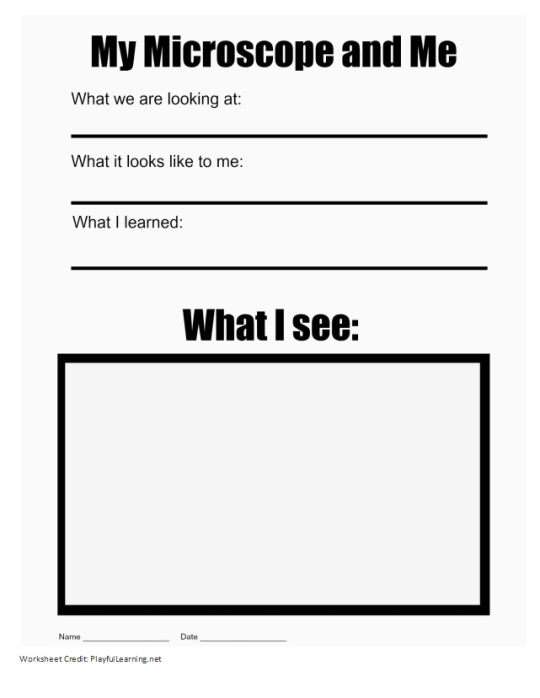



 Fresh Veggies Day is on the 16th of June and emphasises the importance of eating fresh fruit and vegetables every day.Liz Roffe is our Sales Office Manager and resident vegetable grower! We caught up with her to find out about her vegetable patch and asked for hints, tips and recipe inspiration in celebration of Fresh Veggies Day! Where is your vegetable patch and how long have you had it for?
Fresh Veggies Day is on the 16th of June and emphasises the importance of eating fresh fruit and vegetables every day.Liz Roffe is our Sales Office Manager and resident vegetable grower! We caught up with her to find out about her vegetable patch and asked for hints, tips and recipe inspiration in celebration of Fresh Veggies Day! Where is your vegetable patch and how long have you had it for? Our veggie patch is part of our garden and we have had it since moving in, so around nine years.It’s nice having it as part of the garden as you can just pop out and get fresh veggies for tea each evening (you’ve got to have obligatory veggies for tea in our house!) What vegetables do you grow and which is your favourite?We grow a range of veggies including: carrots, parsnips, sweet corn, butternut squash, brussel sprouts, cauliflower, peas, broad beans, leeks, spinach, potatoes, onions, beetroot, runner beans, French beans & broccoli. My favourite is freshly picked sweet corn, you can’t beat it!
Our veggie patch is part of our garden and we have had it since moving in, so around nine years.It’s nice having it as part of the garden as you can just pop out and get fresh veggies for tea each evening (you’ve got to have obligatory veggies for tea in our house!) What vegetables do you grow and which is your favourite?We grow a range of veggies including: carrots, parsnips, sweet corn, butternut squash, brussel sprouts, cauliflower, peas, broad beans, leeks, spinach, potatoes, onions, beetroot, runner beans, French beans & broccoli. My favourite is freshly picked sweet corn, you can’t beat it! (Liz’s sweet corn plants in the greenhouse before being planted)
(Liz’s sweet corn plants in the greenhouse before being planted) (Liz’s sweet corn plants after being planted) What is the easiest vegetable to grow, and which one takes the most effort?I grow most of my plants from seeds in pots before planting them in the patch. Things like carrots, potatoes and parsnips are planted directly. The easiest things to grow are sweet corn and butternut squash as, once planted in the patch, they pretty much look after themselves. Carrots, beetroot and parsnips just need a bit of thinning out and covering but apart from that they are quite easy to look after too.
(Liz’s sweet corn plants after being planted) What is the easiest vegetable to grow, and which one takes the most effort?I grow most of my plants from seeds in pots before planting them in the patch. Things like carrots, potatoes and parsnips are planted directly. The easiest things to grow are sweet corn and butternut squash as, once planted in the patch, they pretty much look after themselves. Carrots, beetroot and parsnips just need a bit of thinning out and covering but apart from that they are quite easy to look after too. How much time goes in to maintaining the patch?Once the veggies are planted it’s just a case of keeping the weeds down and watering them when it’s hot. Initially it can be a little time consuming but just doing the odd 15 minutes here and there is enough to keep on top of things. What are the biggest challenges when growing your own veg?Bugs and slugs! We do our best to use natural remedies and nets to keep them at bay. What time of year do you reap the rewards of your efforts?We try to have things in the garden all year round but there are some times at the beginning of the year when things are a little sparse. It’s normally from July/August onwards when we have an abundance of veggies.
How much time goes in to maintaining the patch?Once the veggies are planted it’s just a case of keeping the weeds down and watering them when it’s hot. Initially it can be a little time consuming but just doing the odd 15 minutes here and there is enough to keep on top of things. What are the biggest challenges when growing your own veg?Bugs and slugs! We do our best to use natural remedies and nets to keep them at bay. What time of year do you reap the rewards of your efforts?We try to have things in the garden all year round but there are some times at the beginning of the year when things are a little sparse. It’s normally from July/August onwards when we have an abundance of veggies. How do you keep the soil rich and nutritious?My husband David and I compost all of the leaves from the garden and use it on the veggie patch. We also add horse manure. Once a year, to help keep the soil light, we add recycled compost from a nursery, normally a tractor trailer load.
How do you keep the soil rich and nutritious?My husband David and I compost all of the leaves from the garden and use it on the veggie patch. We also add horse manure. Once a year, to help keep the soil light, we add recycled compost from a nursery, normally a tractor trailer load. (David ploughing with his Anzani Iron Horse, a piece of horticultural machinery from 1945) What advice would you give to somebody who was thinking about starting a vegetable patch? Do it! Even if you don’t grow things from seeds you can get veggie plants ready to set out from garden centres. However small a patch, there is nothing better that having fresh veggies straight from the garden. Do you have any special recipes you can share with us?As we get quite a lot of butternut squash I make soup which is lovely.
(David ploughing with his Anzani Iron Horse, a piece of horticultural machinery from 1945) What advice would you give to somebody who was thinking about starting a vegetable patch? Do it! Even if you don’t grow things from seeds you can get veggie plants ready to set out from garden centres. However small a patch, there is nothing better that having fresh veggies straight from the garden. Do you have any special recipes you can share with us?As we get quite a lot of butternut squash I make soup which is lovely. *Browse our
*Browse our 












